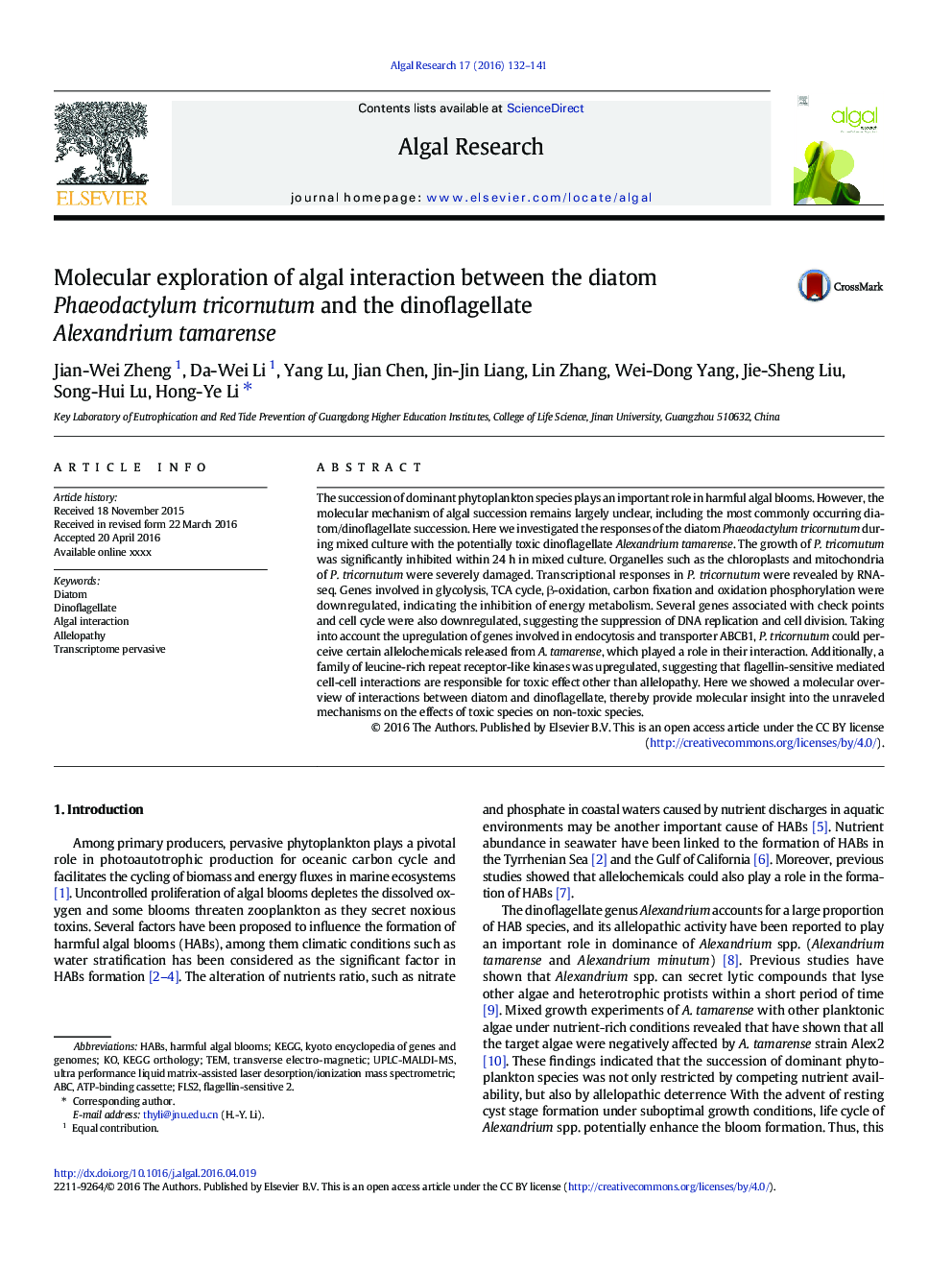| Article ID | Journal | Published Year | Pages | File Type |
|---|---|---|---|---|
| 8086929 | Algal Research | 2016 | 10 Pages |
Abstract
The succession of dominant phytoplankton species plays an important role in harmful algal blooms. However, the molecular mechanism of algal succession remains largely unclear, including the most commonly occurring diatom/dinoflagellate succession. Here we investigated the responses of the diatom Phaeodactylum tricornutum during mixed culture with the potentially toxic dinoflagellate Alexandrium tamarense. The growth of P. tricornutum was significantly inhibited within 24 h in mixed culture. Organelles such as the chloroplasts and mitochondria of P. tricornutum were severely damaged. Transcriptional responses in P. tricornutum were revealed by RNA-seq. Genes involved in glycolysis, TCA cycle, β-oxidation, carbon fixation and oxidation phosphorylation were downregulated, indicating the inhibition of energy metabolism. Several genes associated with check points and cell cycle were also downregulated, suggesting the suppression of DNA replication and cell division. Taking into account the upregulation of genes involved in endocytosis and transporter ABCB1, P. tricornutum could perceive certain allelochemicals released from A. tamarense, which played a role in their interaction. Additionally, a family of leucine-rich repeat receptor-like kinases was upregulated, suggesting that flagellin-sensitive mediated cell-cell interactions are responsible for toxic effect other than allelopathy. Here we showed a molecular overview of interactions between diatom and dinoflagellate, thereby provide molecular insight into the unraveled mechanisms on the effects of toxic species on non-toxic species.
Keywords
Related Topics
Physical Sciences and Engineering
Energy
Renewable Energy, Sustainability and the Environment
Authors
Jian-Wei Zheng, Da-Wei Li, Yang Lu, Jian Chen, Jin-Jin Liang, Lin Zhang, Wei-Dong Yang, Jie-Sheng Liu, Song-Hui Lu, Hong-Ye Li,
